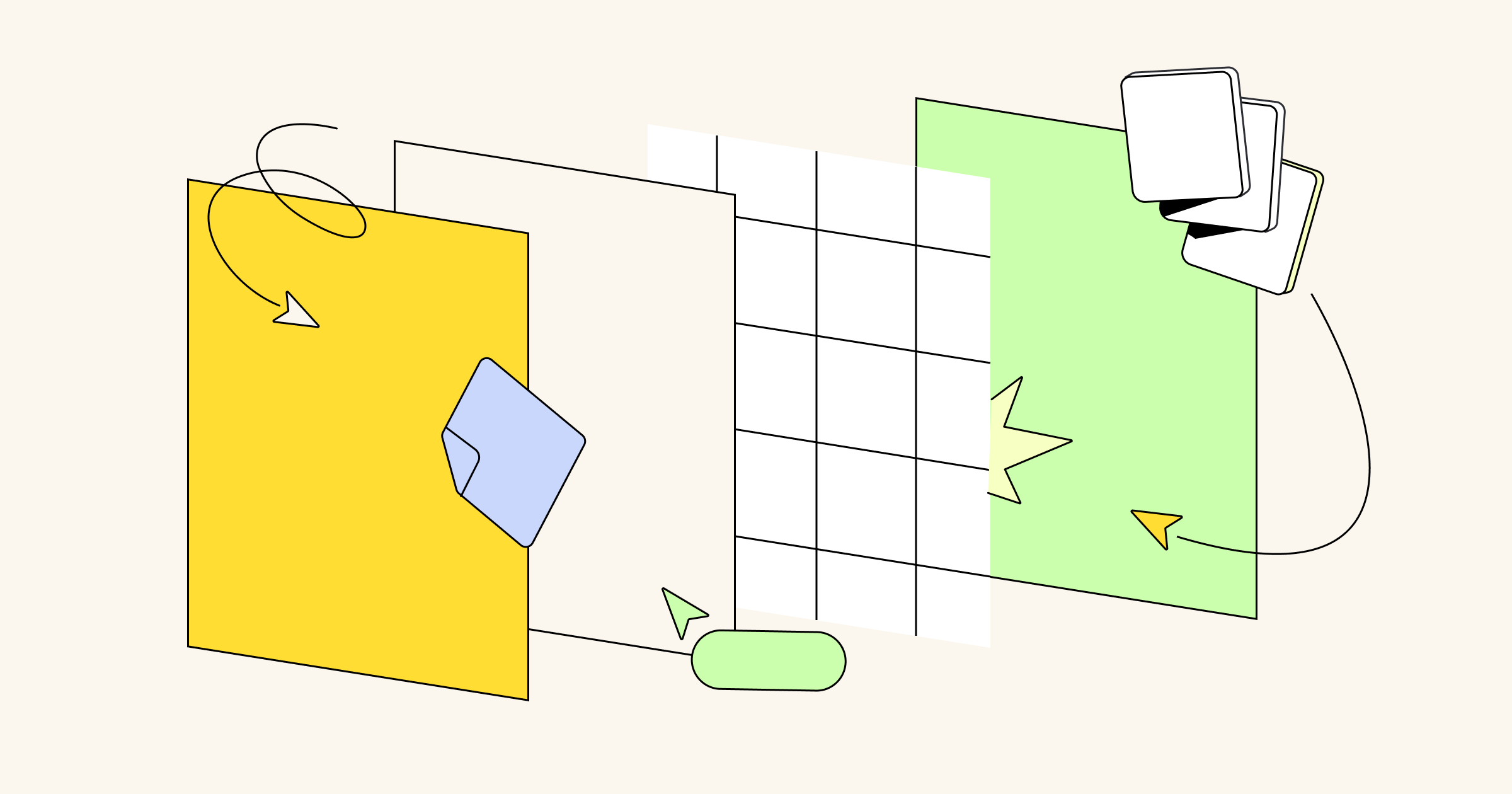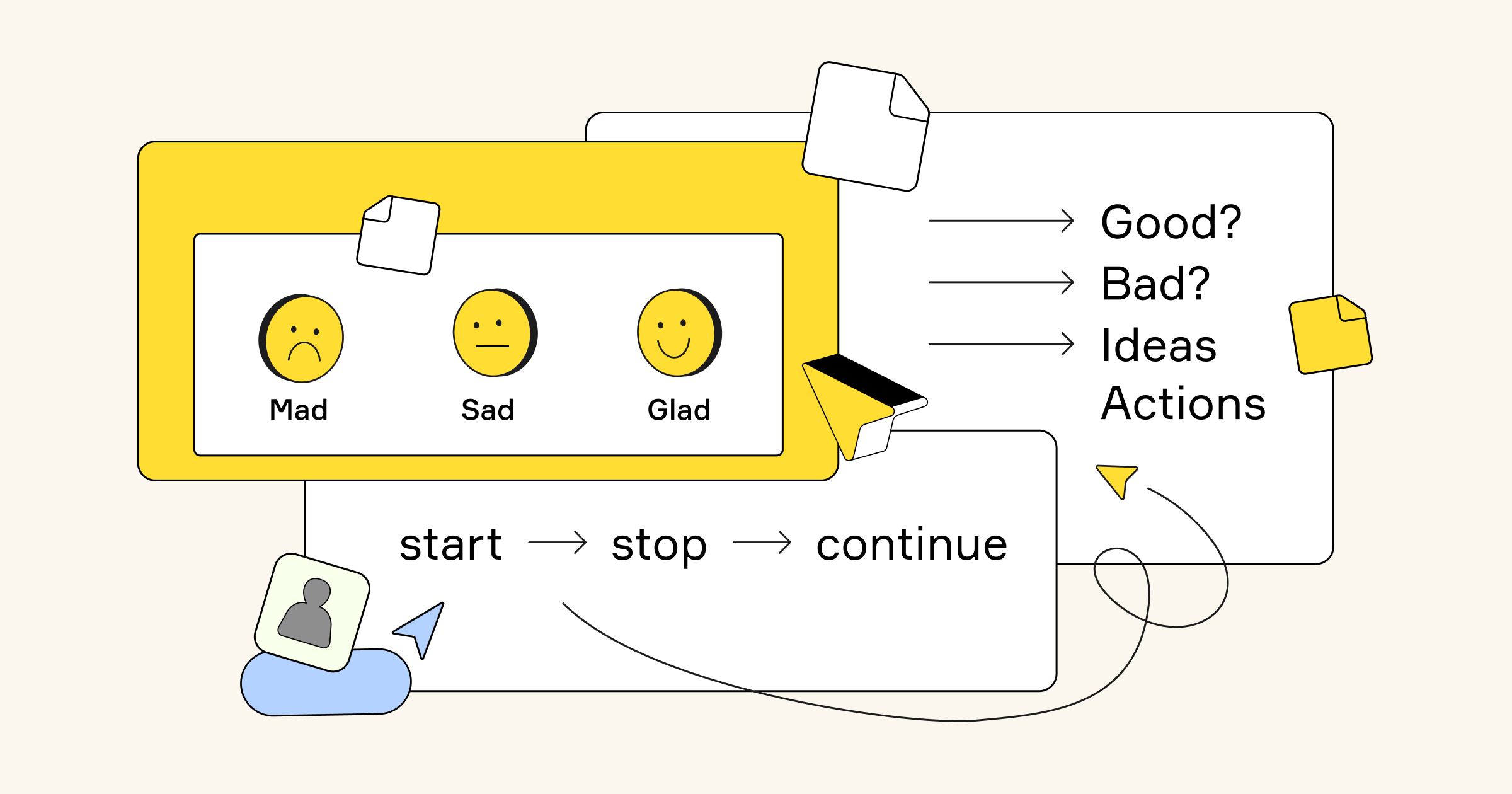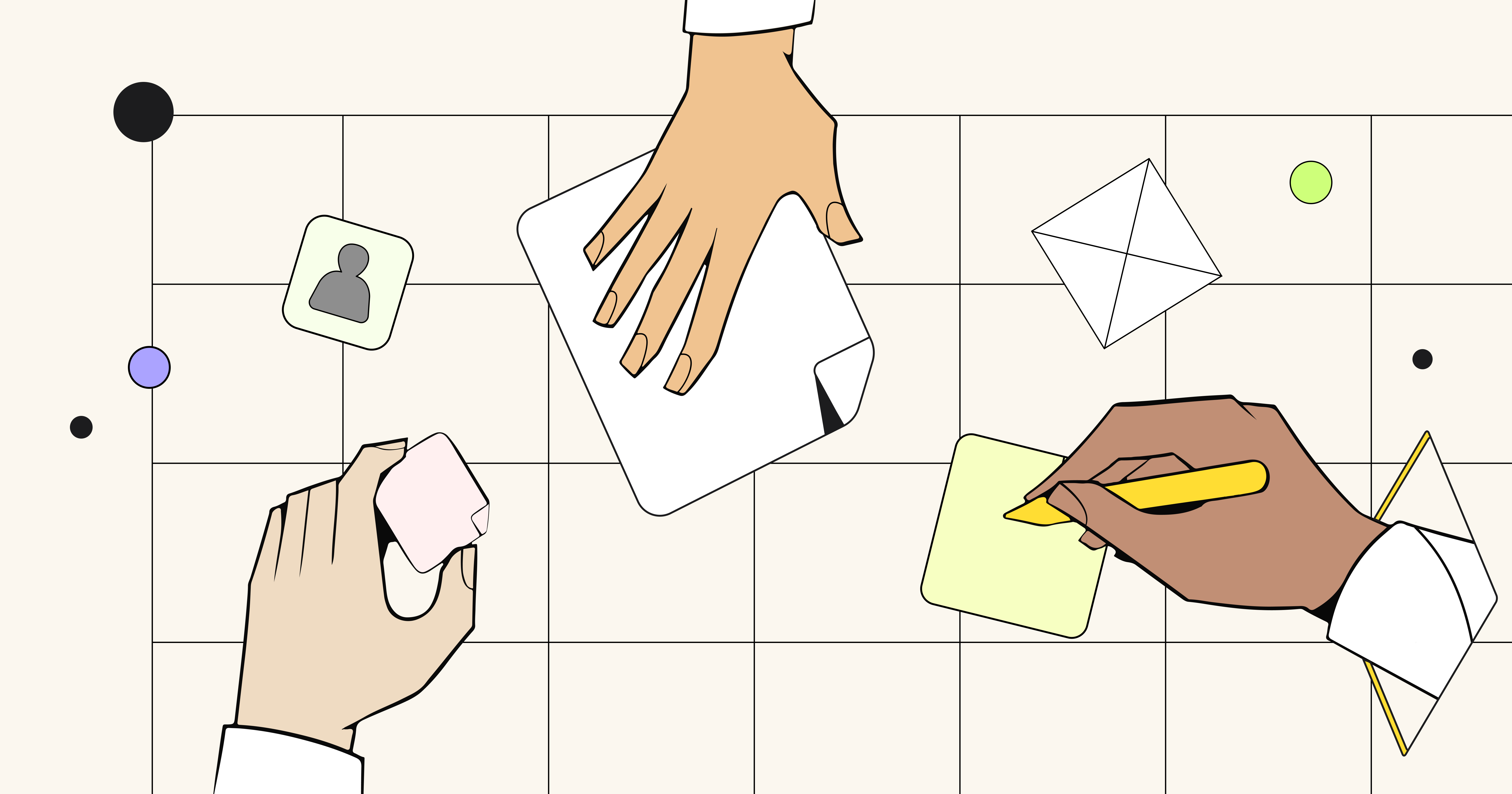A retrospective might feel like something that’s exclusive to product teams. But in reality, a retrospective is a valuable meeting for any type of team or project.
During a retrospective, a team comes together to discuss their work and identify ways to better their processes, communication, relationships, and output as they move forward. It’s a chance for them to reflect, connect, and ultimately improve.
But to reap the benefits of a team retro, you need to be prepared to run one effectively. That’s why we’ve rounded up our favorite Miro retrospective templates to get you started – regardless of what type of team you’re part of.
1. Understand what’s pushing you forward and what’s holding you back with the Sailboat Retrospective
Simply asking teams to reflect on their work together is broad, and it can leave people feeling directionless. This Sailboat Retrospective template, created by Agile coach Johanna Torstensson, is a fun and visual way to talk through each of those things in an organized and impactful way.
The sailboat retrospective technique asks teams to focus on identifying five different things:
- The tropical island: The goal they’re trying to achieve together
- The wind: The things that are pushing them toward that goal
- The sun: The things that are making them feel happy during their work together
- The anchor: The things that are slowing the team down or holding them back
- The reef: The potential risks ahead that could jeopardize the project or future work
2. Celebrate and improve with Retrospective In the Island of Golocans
Much like the sailboat retrospective template, this Retrospective In the Island of Golocans template, created by software engineer and author Clyde D’Souza, gives your team a chance to look back at their work with a fun, nautical theme.
The template has an island with four distinct areas, each of which has different characteristics. You and your team will visit each spot and identify the following in each:
- Sweet fruits: What has gone well during your work together so far?
- Hidden gold: What shoutouts can you give for amazing work?
- Pirates on the shore: What hasn’t gone well during your work together?
- Message in a bottle: What actionable things can you focus on in the future?
Visit those island areas in any order and you and your team will work through all of the important elements of your retrospective.
3. Put your work on the main stage with the Festival Retrospective
Most people are familiar with the common areas of a festival, and this Festival Retrospective template from Scrum master and Agile delivery manager, Joel Blackie, builds on that metaphor. Like with the other templates, your team will talk through four different aspects:
- The main stage: What are the highlights? What has the team done well and enjoyed?
- Fortune teller: What things do you wish you knew at the start?
- First aid tent: What are your pain points? What things haven’t gone well?
- Actions: How can you do better moving forward?
This template breaks down what could be a daunting or overwhelming conversation into a far more approachable (not to mention enjoyable) format.
4. Navigate even deeper waters with the Midnight Sailboat Retrospective
The beloved sailboat retrospective goes even deeper with this Midnight Sailboat Retrospective template from visual experience designer Lucie Agolini. It builds on the classic sailboat technique and adds even more depth.
You’ll identify all of the things you’d work through in a classic sailboat retrospective – what you’re working toward, what risks could throw you off, and the things that pushed you forward as well as held you back.
But this template adds some other areas as well. There’s space on the left of the board where you can jot down your agenda and reference directions for using the board. And on the right, you and the team can drag over your top six priorities and identify the actions and principles that will help you improve those.
5. Help your team bloom with the Rose, Thorn, Bud Retrospective
With this Rose, Thorn, Bud Retrospective template created by H&R Block, you and your team will identify your focus area and then work left to right to pinpoint:
- Roses: What’s working well?
- Thorns: What’s not working well?
- Bud: What’s something that should be developed?
Once you’ve talked through each area, cluster them together to identify patterns and then use the theme sticky notes to give them a name.
6. Host a well-rounded retrospective with the Good, Bad, Ideas, Action, Kudos Retrospective
Retrospectives are valuable, but constantly talking about what you need to do better can feel a little disheartening.
This Good, Bad, Ideas, Action, Kudos Retrospective template by d.labs will walk you and your team through the usual parts of a retrospective – what went well, what didn’t, ideas to improve, and action steps to actually make it happen.
But the template also includes an entire section for kudos, where team members can celebrate and acknowledge others for their contributions and the quality of their work.
7. Take new heights with the Hot Air Balloon Retrospective
Use Scrum master Christian Maniyar’s Hot Air Balloon Retrospective template to figure out what helps your team move faster and what slows you down.
Much like with the other retrospective templates that are built on a metaphor, you and your team will talk through different aspects of your work together. In the case of the hot air balloon approach, you’ll determine your:
- Sunny skies: The positive things that lie ahead.
- Hot air: The things pushing you along.
- Storm clouds: The problems or obstacles coming up.
- Sandbags: The things flowing you down or holding you back.
The hot air balloon provides a simple and understandable structure to work through your retrospective and help your team soar even higher.
8. Use a classic technique with the 4 L’s Retrospective template
The 4 L’s retrospective is a long-standing and well-respected technique. With this type of retrospective, your team reflects on what they liked, learned, lacked, and longed for (hence the “4 L’s” name).
Our own 4 L’s Retrospective template gives you a simple and intuitive way to talk through each of those areas. The board features a quadrant for each “L” where you and your team can chat and add relevant sticky notes.
9. Build better behaviors with the Atomic Habits Retrospective
Your retrospective focuses on the team and not necessarily the work itself. Your conversation is aimed at how to improve your processes and interactions, and not necessarily on how to improve your product or project.
The Atomic Habits Retrospective template from Workshop Wednesday is a great tool to help you. You and your team will work together to build better habits – starting by identifying the habits you want to break, aligning on your team values, and identifying what systems you need to build or improve.
With that groundwork in place, you’re ready to take action by breaking down how you’ll improve and then creating agreements to support and hold each other accountable.
10. Build momentum with the Start, Stop, Continue Retrospective
Start, stop, continue is another classic retrospective technique and this template by Laura Timmins gives you and your team a dedicated spot to talk about the practices you need to stop doing, the ones you need to implement, and the ones you should keep up.
There are also dedicated sections at the end where you can identify common themes and then pull out actions the team should take and questions that still need to be answered.



